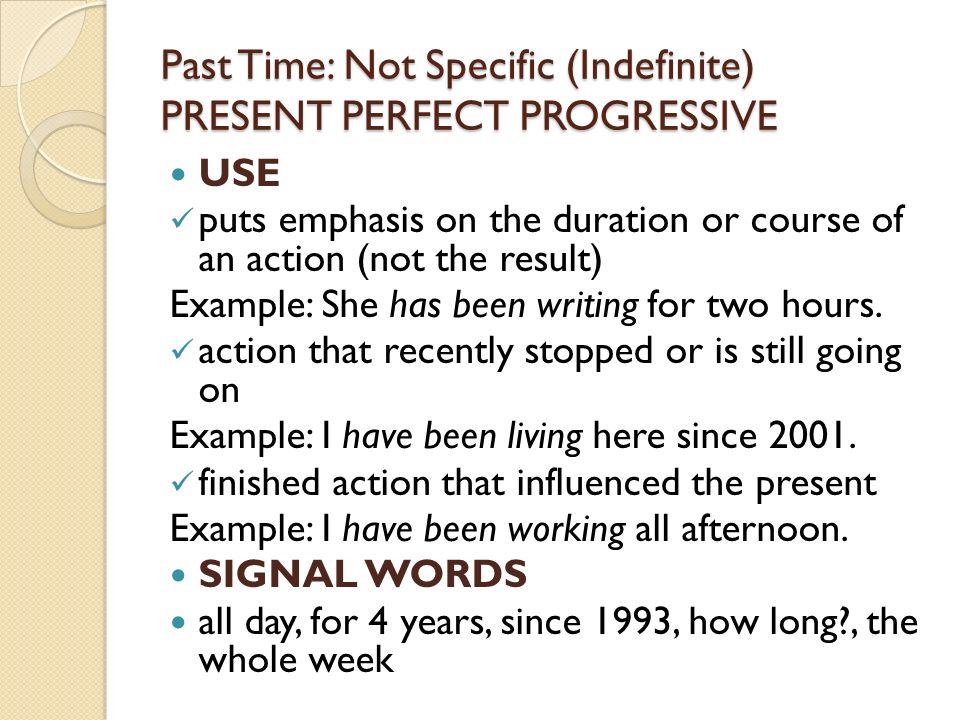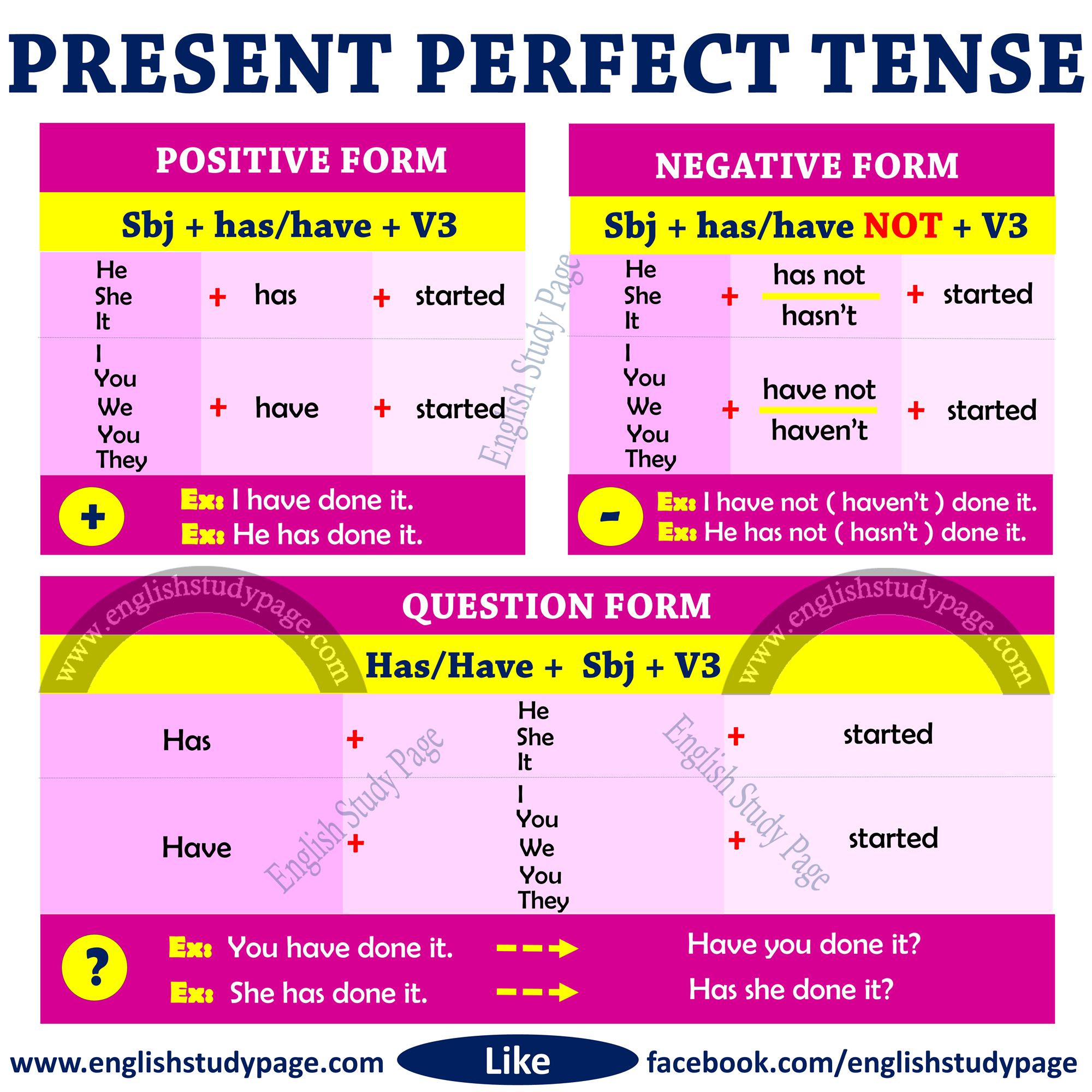Time Signal Persent Perfect Continuous Tense
Sep 18, 2018 Using the Present Perfect Continuous Tense in English. The present perfect continuous is a little bit tricky. If you find a website that claims to explain it in just a few sentences, you should be suspicious. We use this tense in a number of different situations, and it can have different meanings in those different situations. Exercise on signal words 1 Level: lower intermediate. Exercise on signal words 2 Level: intermediate. Go to summary.
The Spanish present perfect (el pretérito perfectocompuesto o elantepresente) is used to talk about things that started in the past and which continue or repeat in the present. It's also used to talk about things that have happened in the recent past.
¡Entendido! (Got it!) So how do you form the present perfect?
Present Perfect Indicative Formula

Time Signal Present Perfect Continuous Tense Chart
present indicative of haber + past participle of another verb
Check out these examples of the present perfect.
Present Perfect Examples
I have seen the mountains of Perú. |
You have gone to Colombia. |
You have written a pretty poem. |
He has slept 10 hours. |
She has said that she is a princess. |
We have returned to buy milk. |
You have sung very well. |
You have made a delicious cake. |
They have danced in 12 countries. |
They have heard the truth. |
For talking about actions that happened in the recent past, the present perfect is more widely used in Spain than in Latin America. It's more common to hear the preterite, or simple past, used in Latin America to talk about something that just happened.

Haber and Pronoun Placement
Haber, the auxiliary verb used with the present perfect, and the past participle are never separated in a present perfect construction. If an object pronoun (such as los) is used with the present perfect, it goes immediately before haber.
Have you seen them? |
I have given them to her. |
Present Perfect or Present Simple?
The present perfect may be used to talk about an action still in progress, but it's also common to use the present tense to do this.
I have lived here many years. |
I have lived here for three years. |
The present perfect may be used to talk about something that was just done, but it's also very common to use acabarde or the simple past, especially in Latin America.
I've bought the milk and the rolls. |
I just bought the milk and the rolls. |
I bought the milk and the rolls. |